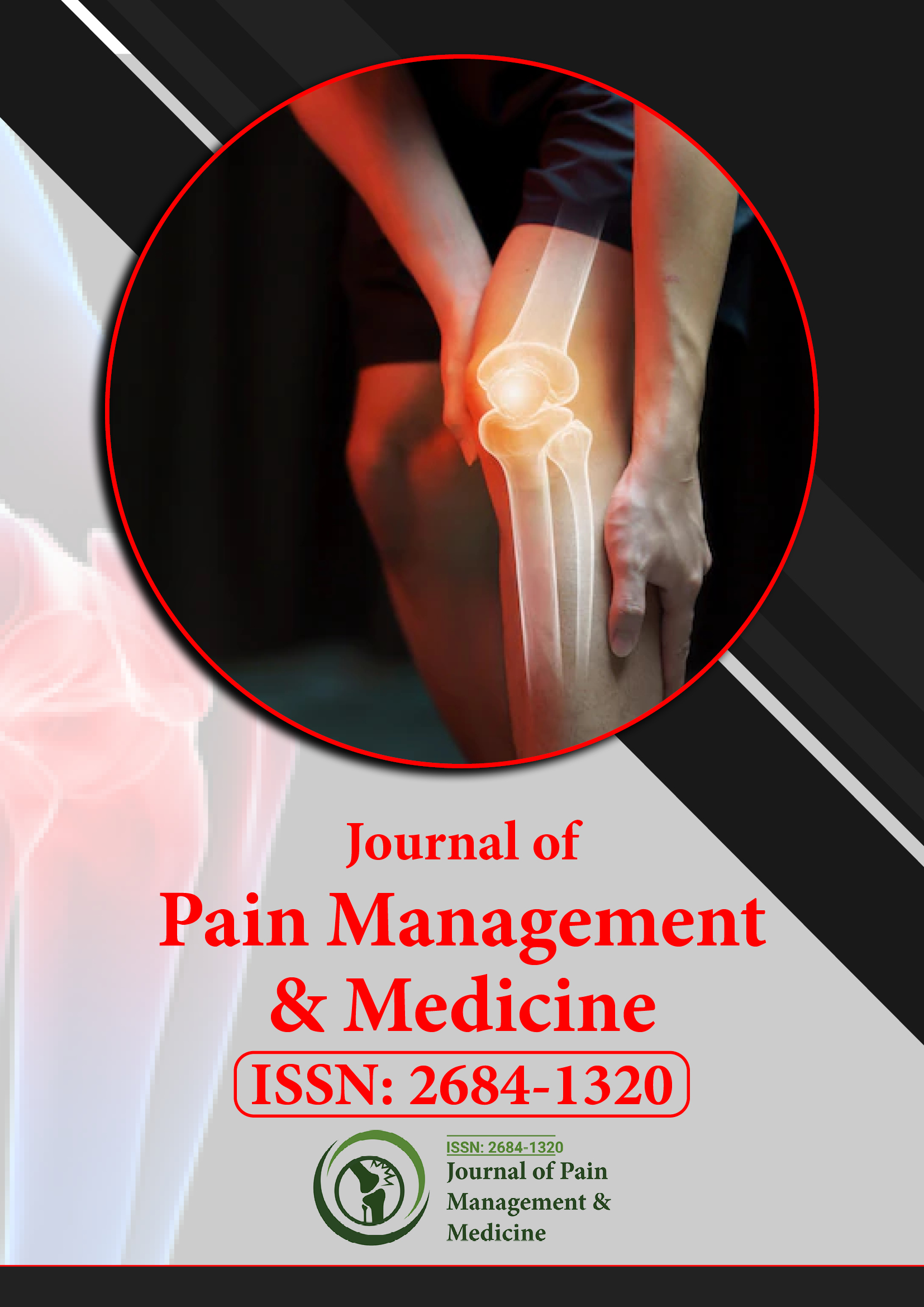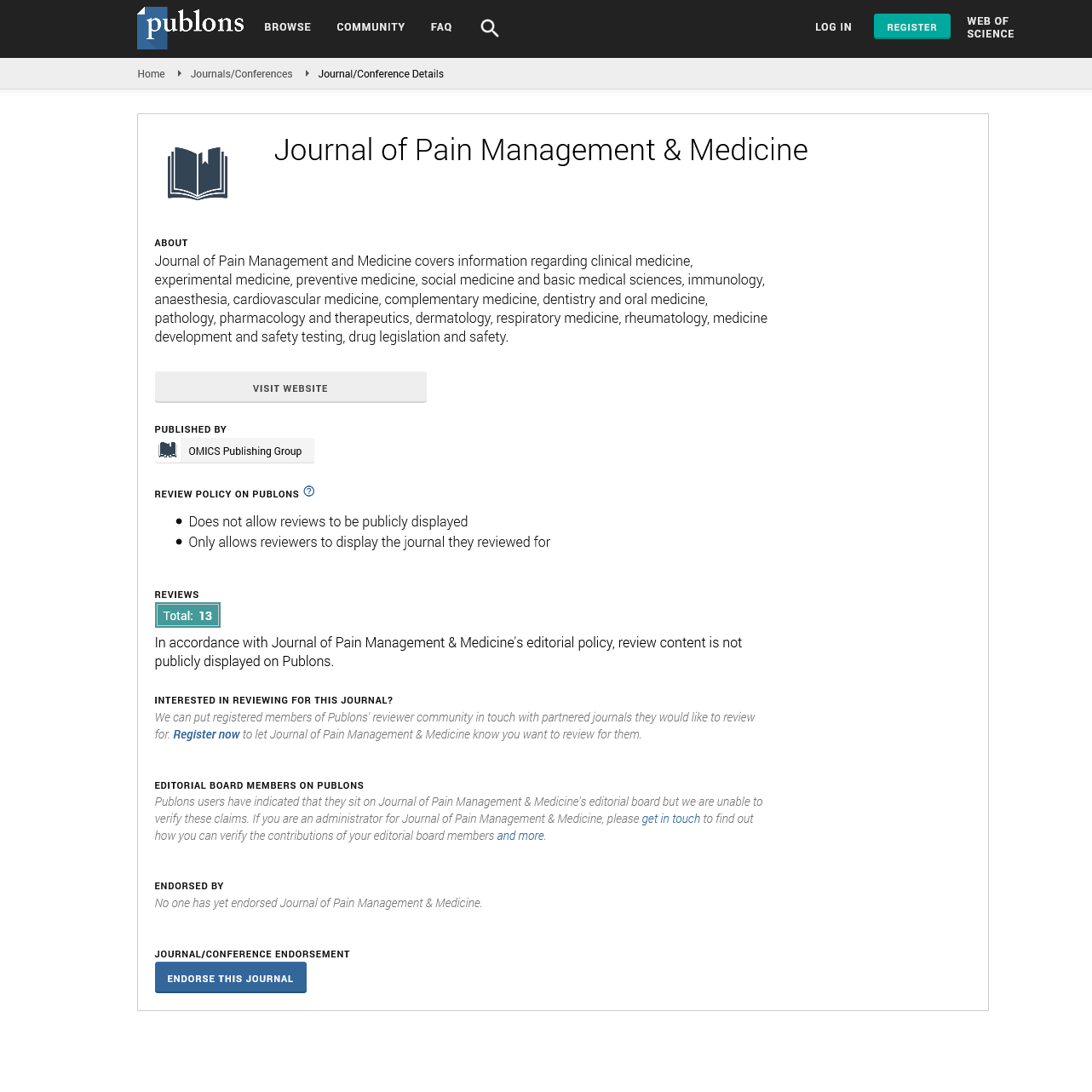Indexed In
- RefSeek
- Hamdard University
- EBSCO A-Z
- Publons
- Euro Pub
- Google Scholar
- Quality Open Access Market
Useful Links
Share This Page
Journal Flyer

Open Access Journals
- Agri and Aquaculture
- Biochemistry
- Bioinformatics & Systems Biology
- Business & Management
- Chemistry
- Clinical Sciences
- Engineering
- Food & Nutrition
- General Science
- Genetics & Molecular Biology
- Immunology & Microbiology
- Medical Sciences
- Neuroscience & Psychology
- Nursing & Health Care
- Pharmaceutical Sciences
Perspective - (2025) Volume 11, Issue 2
Exploring the Utility of Virtual Reality Distraction Therapy for Pain Relief During Burn Wound Care
Giulia T. Conti*Received: 01-Mar-2025, Manuscript No. JPMME-25-28856; Editor assigned: 03-Mar-2025, Pre QC No. JPMME-25-28856 (PQ); Reviewed: 17-Mar-2025, QC No. JPMME-25-28856; Revised: 24-Mar-2025, Manuscript No. JPMME-25-28856 (R); Published: 31-Mar-2025, DOI: 10.35248/2684-1320.25.11.315
Description
Burn wound care is an inherently painful process, involving debridement, dressing changes, and physical therapy, often leading to significant anxiety, distress, and long-term psychological sequelae in patients. Traditional pain management strategies, including pharmacological interventions, may be insufficient or associated with undesirable side effects, particularly during these often-prolonged procedures. Virtual Reality Distraction Therapy (VRDT) has emerged as a promising non-pharmacological adjunct for pain and anxiety management in various medical settings. Investigating its utility specifically for pain relief during burn wound care offers a compelling perspective on enhancing patient comfort and improving the overall burn recovery experience.
One key perspective to explore is the efficacy of VRDT in reducing acute procedural pain during burn wound care. VRDT immerses patients in interactive and engaging virtual environments, diverting their attention away from the painful stimuli and potentially modulating pain perception through cognitive and emotional mechanisms. Studies are needed to quantify the reduction in pain intensity reported by burn patients during procedures when using VRDT compared to standard care or other non-pharmacological interventions. Objective measures of pain, such as physiological responses (e.g., heart rate, blood pressure) and behavioral indicators (e.g., facial grimacing, movement), should also be assessed to provide a comprehensive understanding of VRDT's analgesic effects.
Another crucial perspective involves the impact of VRDT on anxiety and distress associated with burn wound care. The anticipation and memory of painful procedures can lead to significant anxiety, which in turn can exacerbate pain perception. VRDT's immersive nature may create a sense of presence in a safe and engaging virtual world, thereby reducing anxiety and fear. Studies should evaluate changes in patient-reported anxiety levels using validated scales and observe behavioral signs of distress during procedures with and without VRDT.
The acceptability and feasibility of implementing VRDT in the burn care setting are also critical considerations. Factors such as the ease of use of VR headsets, the availability of appropriate virtual environments tailored to burn patients (e.g., calming, non-medical themes), the time required for setup and use, and the potential for motion sickness or other adverse effects need to be carefully evaluated. Patient feedback on their experience with VRDT is essential for optimizing its design and integration into routine care.
From a developmental perspective, research should explore the optimal characteristics of virtual reality content for burn patients of different ages and with varying burn severity. Engaging and age-appropriate virtual environments that promote relaxation, exploration, or playful interaction may be particularly beneficial for pediatric burn patients. Tailoring the VR experience to individual patient preferences and needs could further enhance its effectiveness.
The potential for VRDT to reduce reliance on pharmacological analgesia is another important area of investigation. If VRDT can provide significant pain relief and reduce anxiety, it may lead to a decrease in the need for opioids and other pain medications, thereby minimizing their associated side effects and the risk of dependence. Studies should track the use of analgesic medications during burn wound care procedures with and without VRDT.
The long-term impact of VRDT on psychological outcomes in burn survivors warrants exploration. The repeated experience of painful procedures can contribute to the development of post-traumatic stress disorder (PTSD) and other psychological difficulties. By mitigating pain and anxiety during these critical early stages of recovery, VRDT may have a positive influence on long-term psychological well-being. Longitudinal studies following burn patients who used VRDT during their acute care are needed to assess this potential benefit.
Finally, considering the cost-effectiveness of VRDT in the burn care setting is essential for its widespread adoption. While the initial investment in VR hardware and software may seem significant, the potential for reduced medication costs, shorter procedure times (due to improved patient cooperation), and improved long-term psychological outcomes could ultimately make VRDT a cost-effective adjunct to standard care. Economic evaluations comparing VRDT with traditional pain management strategies are needed.
In conclusion, exploring the utility of virtual reality distraction therapy for pain relief during burn wound care offers a promising avenue for enhancing patient comfort, reducing anxiety, and potentially improving long-term psychological outcomes in this vulnerable population. Rigorous research evaluating its efficacy, acceptability, feasibility, impact on medication use, and cost-effectiveness is crucial for determining its role in the multidisciplinary management of burn injuries and for translating this innovative technology into routine clinical practice.
Citation: Conti GT (2025) Exploring the Utility of Virtual Reality Distraction Therapy for Pain Relief during Burn Wound Care. J Pain Manage Med. 11.315.
Copyright: © 2025 Conti GT. This is an open access article distributed under the terms of the Creative Commons Attribution License, which permits unrestricted use, distribution, and reproduction in any medium, provided the original author and source are credited.

